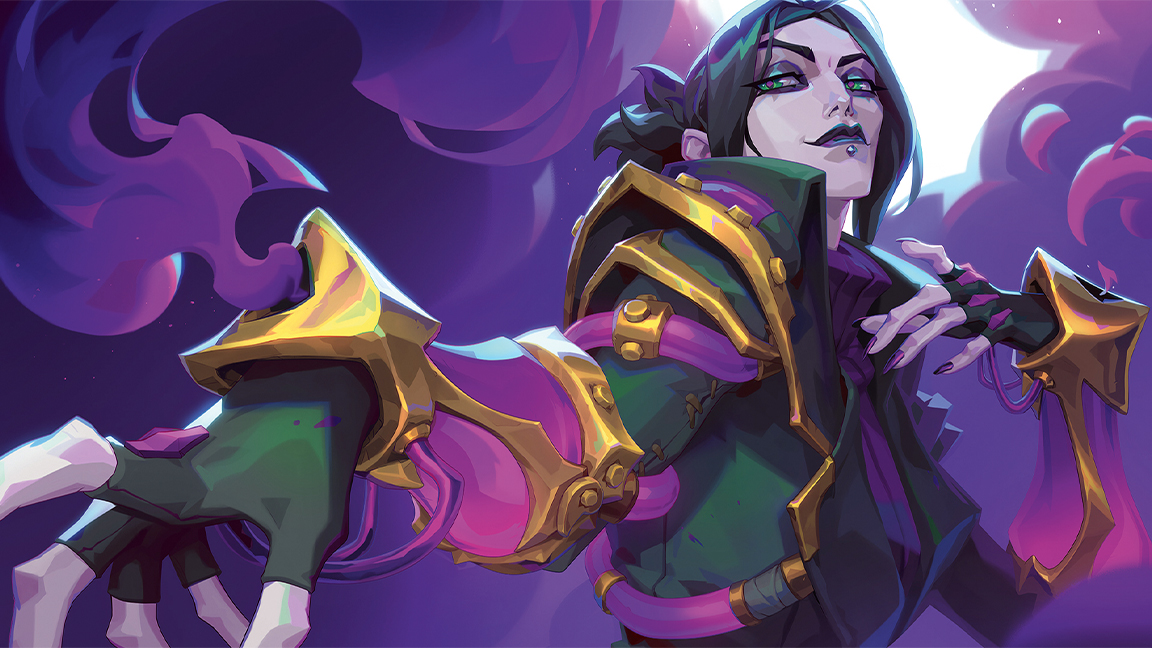
Envisioning other worlds is a not insignificant challenge. It's also an opportunity, of course. For their upcoming role-playing game Wayfinder, made using Unreal Engine, developer Airship Syndicate has created a new space and place for video gamers to contend with intergalactic conflict.
Our conversation begins with an exploration of what constitutes the overall design philosophy at the game studio. Brian Jones, the team’s character lead, sets the conversation in motion when he notes the first questions typically asked of an environment design and concept art are, "Is it cool? Is it engaging?" he says. "As simple as it sounds, we constantly ask ourselves these questions. If it isn't, we go a different direction or iterate until it is. We focus on making exciting and dynamic characters and creatures that not only look great, but also expand upon the rich lore of our worlds."
Director of brand Billy Garretsen embellishes Jones' observation. 'We hold our art to very high standards, so there is a core philosophy of quality that brings it all together," he explains. "Both Airship Syndicate and Digital Extremes [publisher] believe in making games that value our players' time, and we try our best to make each character as compelling to look at as they are to play. We don't spend too much time chasing visual trends from other games on the market and really enjoy carving out our own space. We often think, 'What would we want to play?' and then make it."
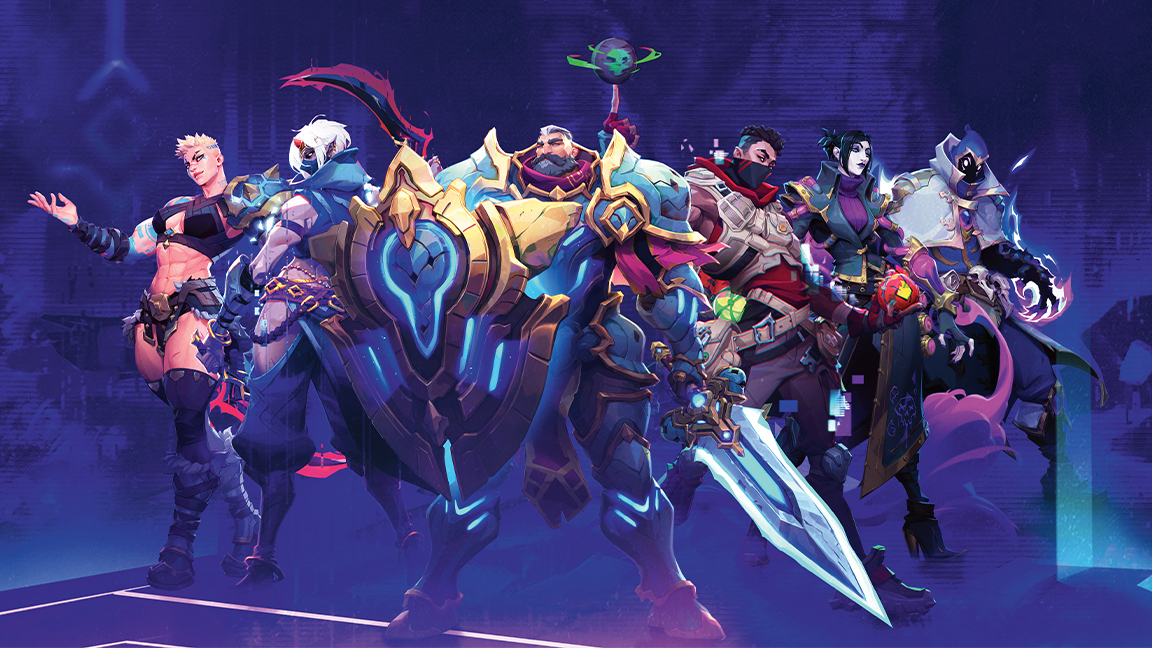
CEO and creative director Joe Madureira discusses going from initial concept through to final design, he explains how his process always begins by finding the core design goals for the character. "With the Wayfinders, we start by asking, 'What combat role are they fulfilling? Which archetype do they fall under?’ For creatures, we'll ask, 'How many spawn at a time? How hard are they to kill? Do they use weapons or magical attacks? Where will you be fighting them, and are they too big for those spaces?'"
After this, Madureira tells me the team's concept artists will do loose explorations to find "the right vibe", with the aim to ensure each one stays fresh and are "not overlapping too much with creatures and characters we’ve done before".
Once Madureira approves a direction then the team creates a tighter production concept, which they create a 3D blockout from (read our best 3D software feature). "Animation then looks for potential issues with the design from a rigging and animating perspective, sometimes creating simple animations as part of the test, and then we move to final 3D art; sculpting, textures and materials, and so on," hey says.
Madureira gets hands-on too, saying, "For most of the Wayfinders, I’ll often do some loose explorations or a close-up face or bust of the character just to get the general idea across, and sell the idea to some of the other stakeholders on the team.
He reveals a tip when discussing his workflow, telling me he likes to start with the character's face, "because it helps me figure out their personality and informs the rest of the design. Not everyone works this way, but I like it!"
Creatures are a bit easier, and sometimes more fun!
Joe Madureira
For all of the team's enthusiasm, there's also a recognition that making creative choices that work is not easy; that it always involves challenges. Of these challenges, in relation to the character design work undertaken for Wayfinder, Madureira points out one specific challenge. "We started out with a broader and more traditional character creation system," says Madureira.
"When we pivoted to become more character focused, we did have some work to do in converting those early characters and rigs [some work had already been done on them, including animations] to be the more iconic-feeling Wayfinders like those we’ve introduced. Creatures are a bit easier, and sometimes more fun!"
Creating the swappable elements of Wayfinder

That integration of systems at the studio provide the space in which to be creative, as Jones explains: "We have different systems when it comes to different types of characters and creatures, each with their own set of rules. The Style System [swappable cosmetic components] for instance, requires that we make predetermined parts of the Wayfinders be swappable and as compatible between each costume as possible. It's a lot of work, but it makes customising your look a lot more dynamic.
"On the flip side our Personas [full-body costumes] give us the freedom to make cool one-off costumes that aren't limited by the style system. For the creatures and enemies, we've adopted a philosophy that each behavioural and / or combat difference should have a unique visual adjustment. You should be able to know at a glance that an enemy has a unique gameplay experience. This can range from as little as a colour variant to a full new model, animation, VFX and sound."

Another dynamic for the artists to negotiate has been the balance between 'cool' character design and the necessary, more practical functions of how a character works within the game space of Wayfinder. Of this, Madureira notes: "I feel like finding that balance is one of our ongoing struggles, and each one presents new challenges, especially since we really want to differentiate one from the next and make each of our Wayfinders special.
"Leaning into those unique aspects of each character and how they play within the game always helps us get over the hump. You also learn what’s possible or difficult over time, and it almost becomes second nature knowing what’s an easy win, or what’s going to be too complex scope-wise."
Jones adds: "For us, I don't think the two are necessarily exclusive. We're always looking to do the 'coolest' thing possible. If anything, the visuals often add to the functionality. We have an amazing design team that comes up with great ideas. It then goes into the art process where the design often gets moulded by the visual elements. The collaboration always leads to amazing-looking, functional characters."

Creating Wayfinder's recognised style
With Airship Syndicate's house style recognised and enjoyed by its fans and players, Madureira digs into how the character designs for Wayfinder are consistent with earlier work at the studio, while also showcasing new sensibilities.
"All our characters in Wayfinder definitely have the look of our established house style," he says. "One major difference is that we feature the characters more prominently, and they are much larger on screen, our past few titles having been isometric with combat mapped to a 2D backdrop. For this reason, the characters we create have to be much higher fidelity, with more complex rigs, facial animations, and so on.
"As I mentioned, we like to avoid repeating ourselves, so finding new ways of creating fantasy characters that feel fresh pushes us in unexpected directions. For instance, we're adding many more sci-fi elements than we originally planned. Sometimes we pivot based on how the artists and team react; how excited they are, or aren't. And of course, keeping an eye on the community's reactions is going to influence those choices further."
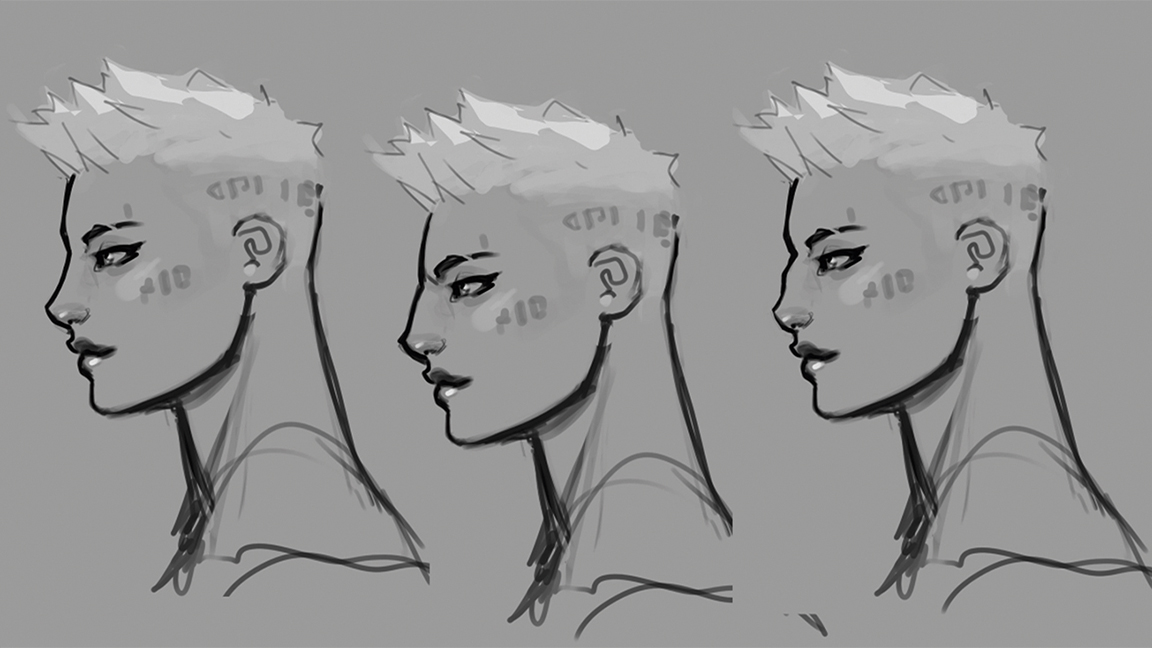
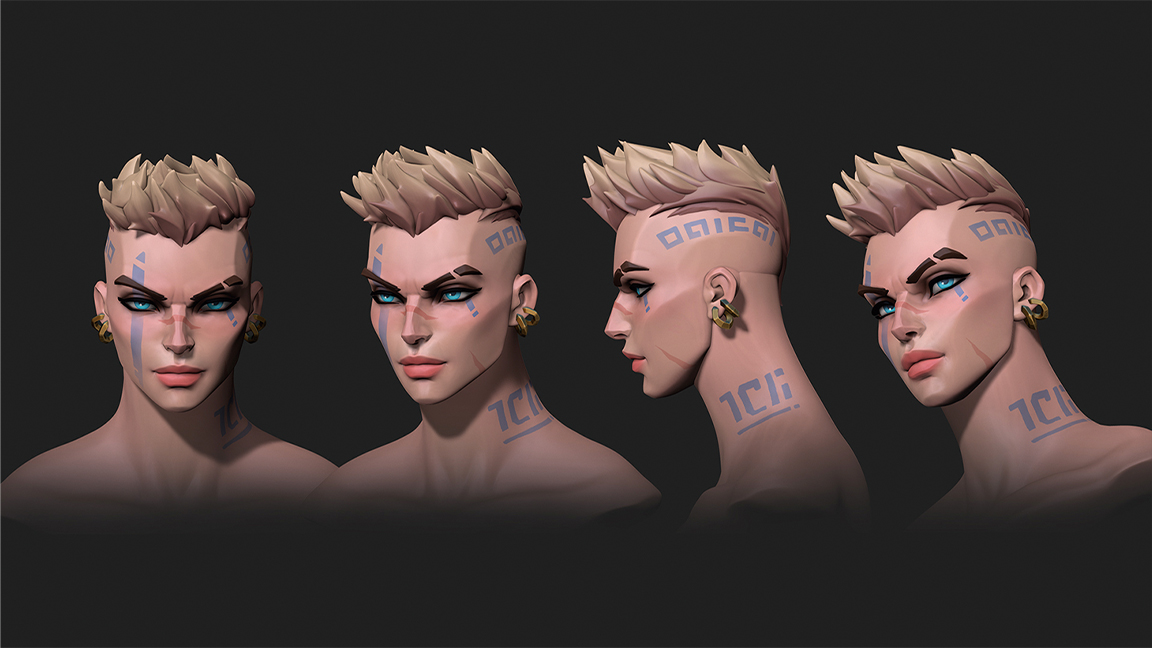
Madureira then makes a point about character design and identifies two that fuse classic fantasy with a harder sci-fi, technological look. "Wingrave is pretty straightforward," he adds. "He’s got the vibes of a traditional paladin, but his armour is carved with glowing accents that make it look almost like Tony Stark's idea of a knight.
"Meanwhile, Silo started as a pretty straightforward rogue / ranger type, but we updated his leather armour with more tactical gear as well as a sportier silhouette. We gave him a rifle instead of a bow. But in the very first sketches of him, he was hooded and had a bow; which is much more traditional for a ranger type. We attempt to apply this process wherever we can, while trying not to lose the appeal of the core fantasy world beneath."
Joe Madureira, comics to games
Madureira mentions continues discussion of character design, revealing how his work in comics transfers into his video game character design. "I think the constraints and thought process are a bit different," he tells me, "but like comics, all my stuff pushes very big, chunky characters and stylised shapes, lots of colour and energy. We don’t really create realistic-looking stuff, even though I’m a fan of playing them. And everything and everyone has muscles. Lots of them."
The artist shares how keeping things fresh is the biggest struggle. He needs to consider which tropes to lean into, and which to avoid, "so that our world feels familiar, or immediately relatable but still new and unlike anything you’ve seen in our past games or elsewhere".
He explains how The Gloom started with the concept of magic being treated as almost an alien presence. This is a very sci-fi concept, like something you would see in Annihilation or The Expanse, than in a traditional magical fantasy world.
"We wanted it to feel out of place, like it clearly did not belong in this world. I think all of our artists took a stab at it and whittled away at it over time, I don’t think we liked the results until very recently, actually," he says. "Flesh and blood monsters are a bit easier and more fun, in my opinion! As the game world gets larger, we hope to add more ambient creatures to help flesh it out, not just hostile monsters."

Of the Airship aesthetic, Jones notes: "Each project has its own visual identity while at the same time feeling connected. It doesn’t hurt to have such a strong dynamic visual influence in Joe Madureira. Most of us are huge fans of his style and it's just natural to incorporate it into what we do.
"This is the first fully PBR [physically-based rendering] project where the camera isn't locked in an isometric angle. It does present new obstacles, but it's also freeing in that we get to put a lot more fidelity into each character.
"Additionally, we have been mixing genres more and more, which really makes Wayfinder feel both unique and approachable. Are you a fan of fantasy? We have something for you! Sci-fi? We have you covered too. It's made for an extremely fun project to work on as an artist."
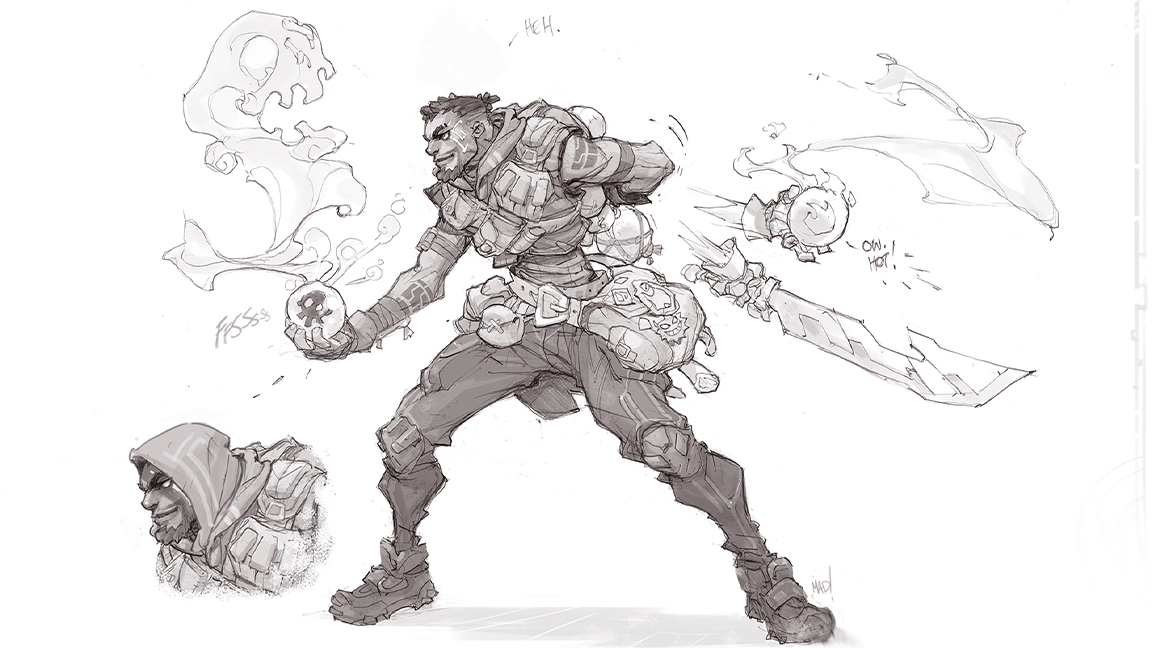

In developing the character concept designs for Wayfinder, the team were mindful of how this work could be informed by, and work with, the environment design. Madureira explains: "It doesn't affect our player characters as much since they need to look good and be able to manoeuvre in any environment, but for creatures, we like them to look more integrated into the environment and feel like they belong.
"We’ll try to keep their colour range complementary to the places that you encounter them. We also have to be mindful of how they move, their attacks and size so they don’t get stuck on things and look like dummies or become exploitable by players!"
World building in Wayfinder
Jones adds a further key point. "I think it influences a lot based on lore," he says. "We’re trying to build out a whole world and in doing so, the lore drives the visuals of the environments and the creatures are living within that world. The best example of that comes from the Gloom.
"Where the Gloom have heavily crossed over, you will see that it's also corrupting and reshaping the environment. Also, the factions that live in each biome have visual cues that make them believable within their own settings."
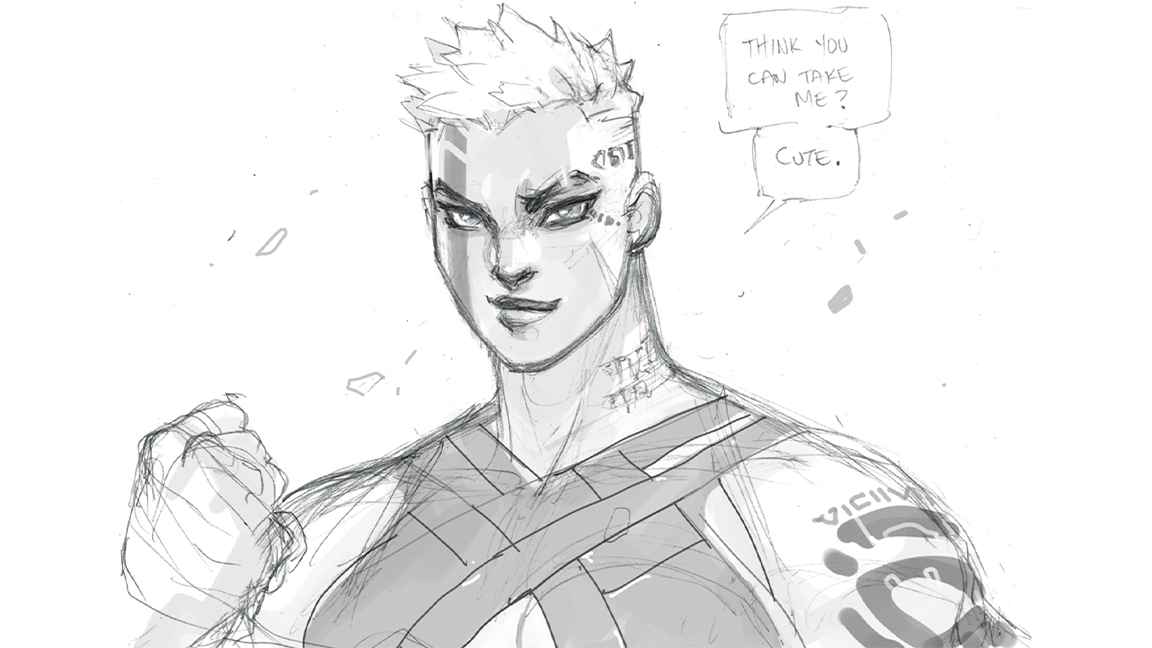

The believability and richness of the environments is a point that lead concept artist Virginia Critchfield is also keen to stress. "The environments are characters unto themselves," she says. "Outside of the Wayfinders, the environment is the character that the player will spend the most time with, and we spend a great deal of time designing and building its tone and mood, personality, and defining traits.
"We ask ourselves questions like, 'How old is it? What is its name? How did it come to be here? What does its backstory and future look like? Is it healthy, ill? Is it poor or is it opulent?' Those character-defining questions are amazing tools for your world building. These stories provide a home to our creatures and enemies, and contrast for our players."
Critchfield's observation is a fitting one for our conversation to finish with, reminding us of just how powerful considerations of character are when generating and sparking creativity across the spectrum of storytelling and game-playing needs. In turn, that design work will create a consistent and engaging universe that might just become a home for us to escape to whenever we feel the need.
Wayfinder is currently game is in early access on PlayStation 5 and PC via Steam, with a release planned for later this year. If you're inspired by Wayfinder's art team take a look at our guide to the best digital art software and best drawing tablets.







